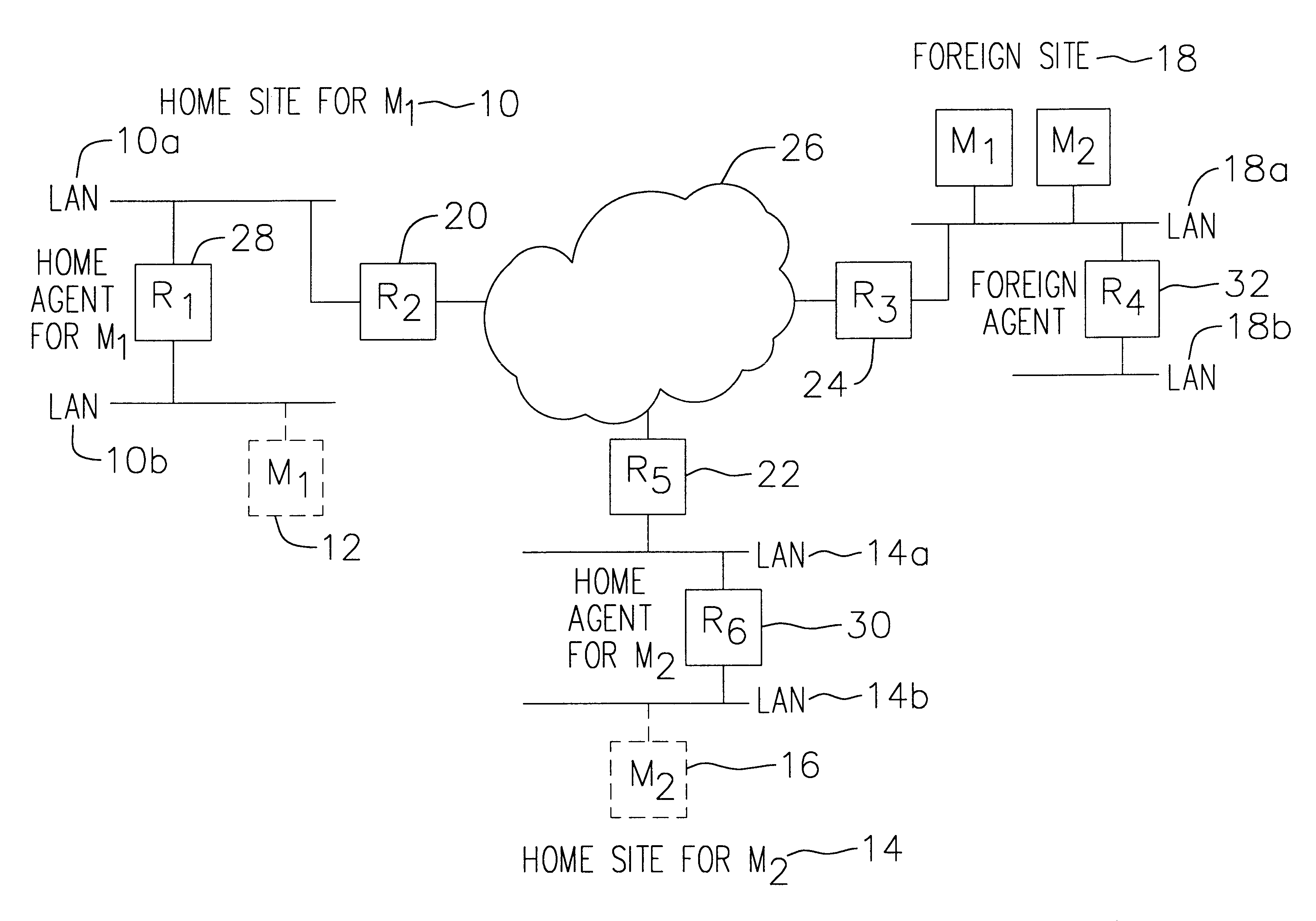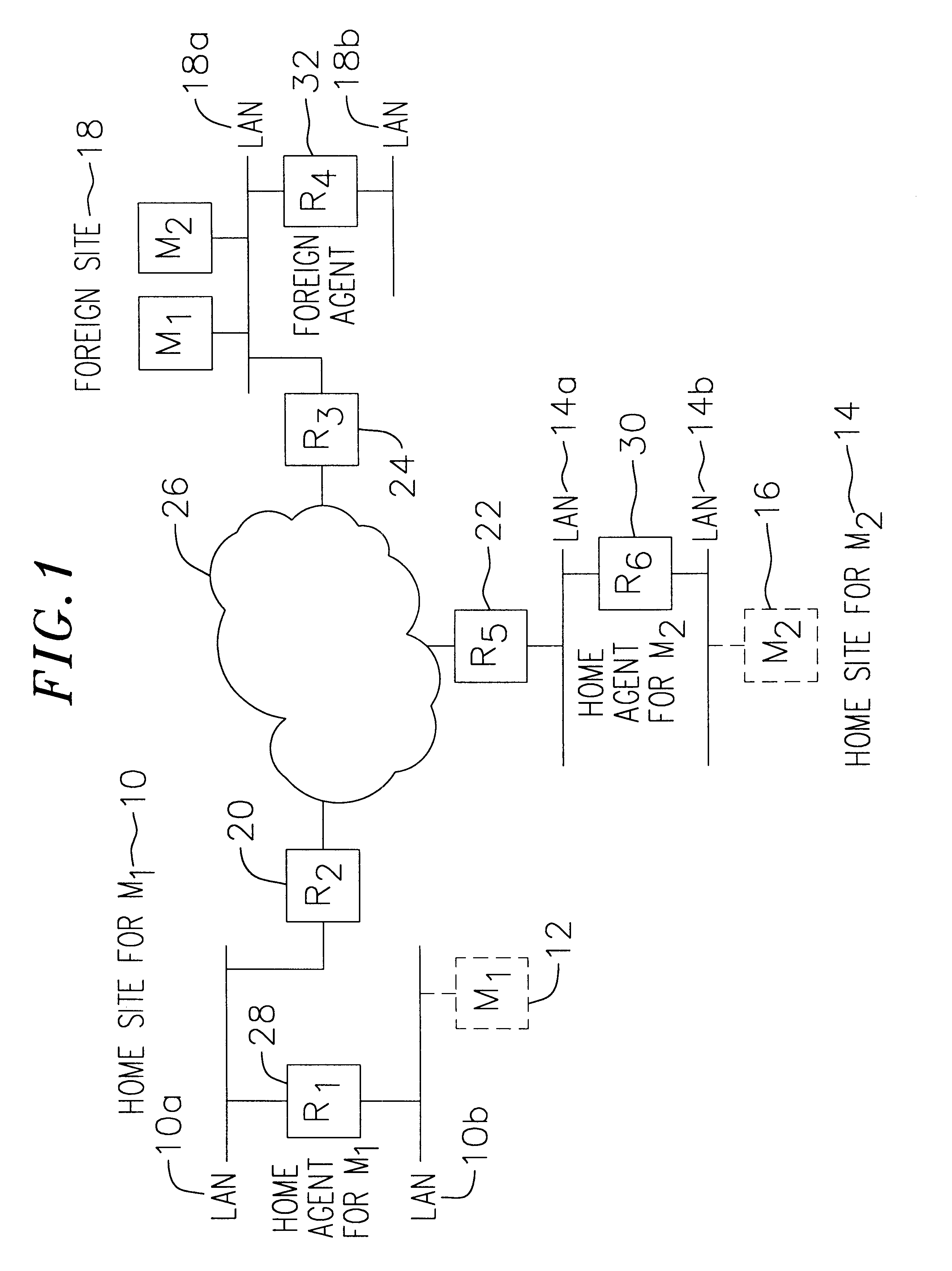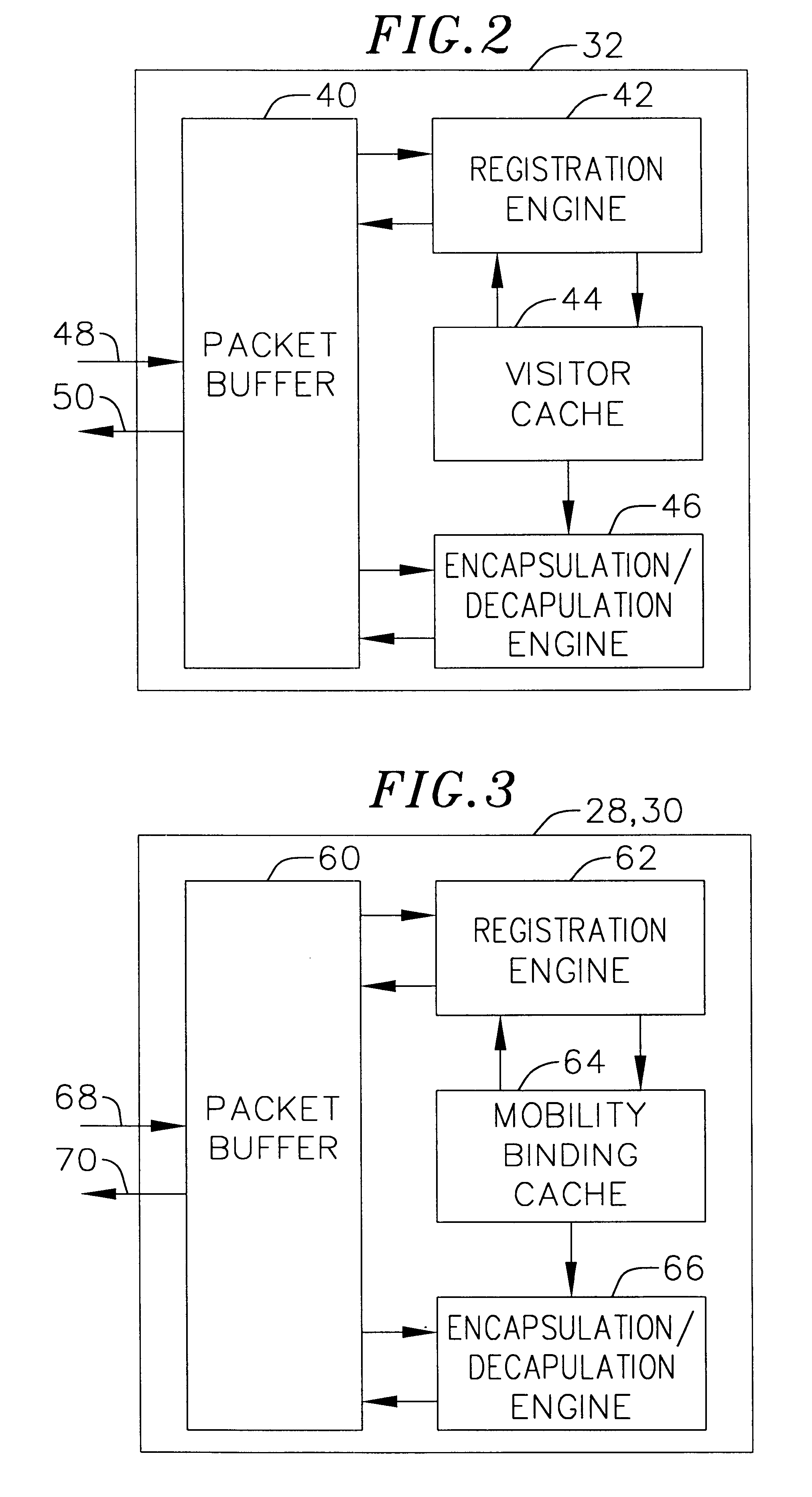Temporary unique private address
a technology of private ip addresses and unique addresses, applied in the field of unique private addresses, can solve the problems of ambiguity as to the exact recipient of the packet, ip addresses have become scarce resources, and private ip addresses, however, are not guaranteed to be unique,
- Summary
- Abstract
- Description
- Claims
- Application Information
AI Technical Summary
Problems solved by technology
Method used
Image
Examples
Embodiment Construction
FIG. 1 is a semi-schematic block diagram illustrating a network environment supporting private IP addressing for mobile IP. The network includes a home site 10, home site 14, and foreign site 18, coupled respectively to a backbone network 26 over switching nodes 20, 22, and 24.
Home site 10 includes a home agent 28 coupled to local area networks 10a, 10b. Similarly, home site 14 includes a home agent 30 coupled to local area networks 14a, 14b. Foreign site 18 includes a foreign agent 32 coupled to local area networks 18a, 18b.
Home sites 10 and 14 are respectively the home sites for mobile nodes 12 and 16. In an exemplary embodiment, mobile nodes 12 and 16 move from their respective home sites 10 and 14 to the foreign site 18, and remain temporarily connected to the foreign site.
Home and foreign agents 28, 30 and 32 may be gateway devices, such as, for example, switches, routers, and / or the like, including network interfaces for forwarding packetized communications. Home agents 28, 3...
PUM
 Login to View More
Login to View More Abstract
Description
Claims
Application Information
 Login to View More
Login to View More - R&D
- Intellectual Property
- Life Sciences
- Materials
- Tech Scout
- Unparalleled Data Quality
- Higher Quality Content
- 60% Fewer Hallucinations
Browse by: Latest US Patents, China's latest patents, Technical Efficacy Thesaurus, Application Domain, Technology Topic, Popular Technical Reports.
© 2025 PatSnap. All rights reserved.Legal|Privacy policy|Modern Slavery Act Transparency Statement|Sitemap|About US| Contact US: help@patsnap.com



